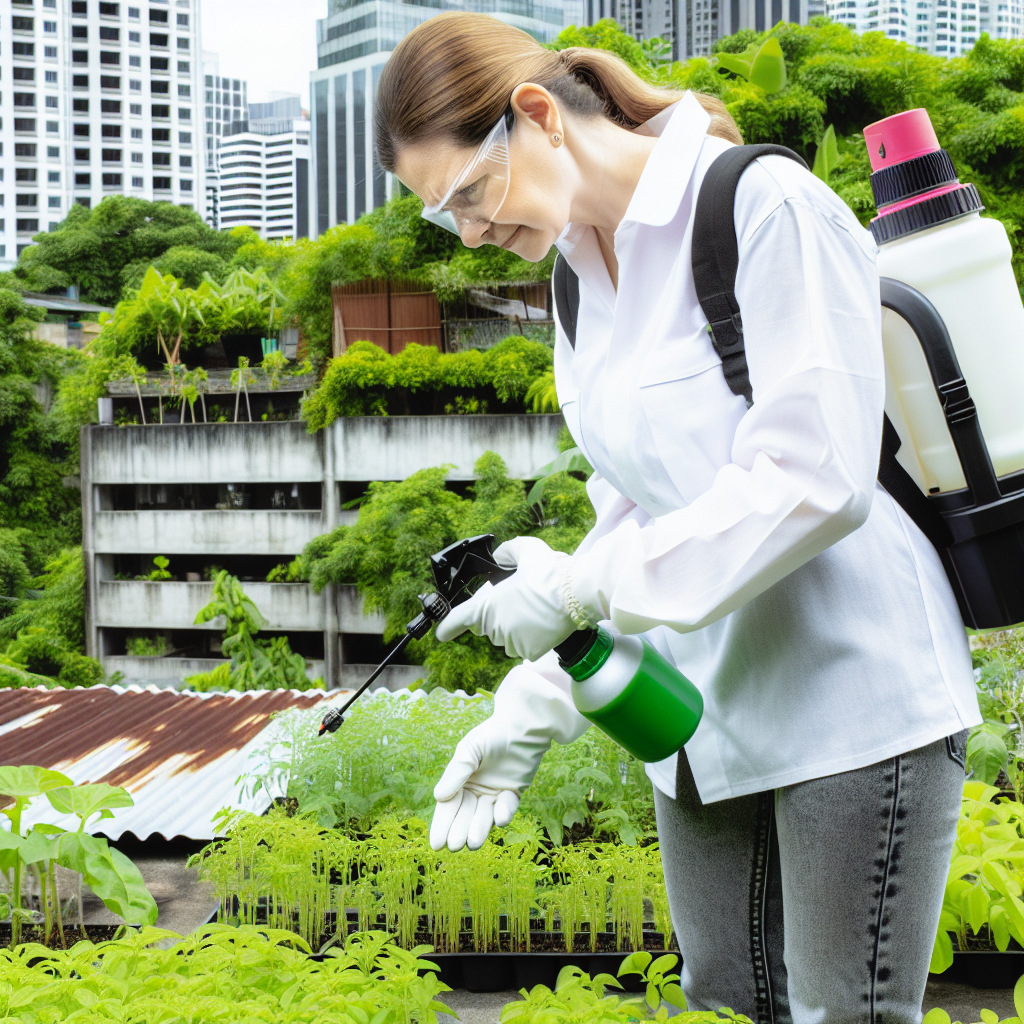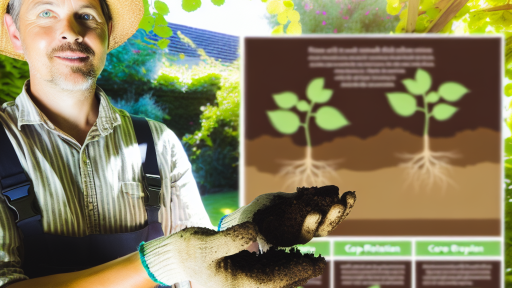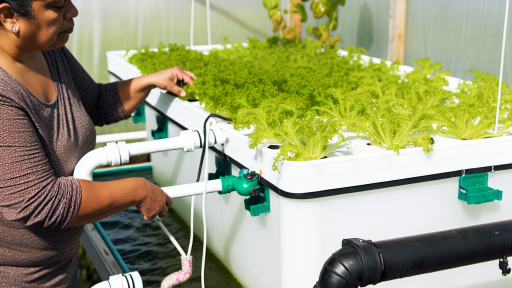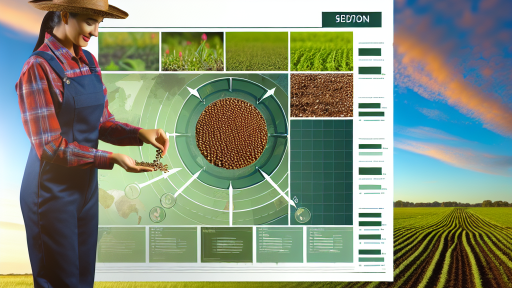Pest Control Strategies for Urban Gardens
Introduction to Urban Gardening
Urban gardening has gained immense popularity in recent years.
Many city dwellers are turning to this practice for food security.
Gardening in urban areas provides fresh produce right at home.
Furthermore, it helps strengthen community ties among neighbors.
As city landscapes change, gardening offers a green escape.
It enhances the aesthetic appeal of metropolitan environments.
However, successful urban gardening requires planning and care.
The Importance of Pest Control
Pest control is essential for maintaining healthy urban gardens.
Pests can destroy crops and diminish yield significantly.
Effective pest management protects the investment of time and resources.
Furthermore, it minimizes the use of harmful chemicals in the environment.
Healthy gardens encourage beneficial insects and pollinators.
This, in turn, supports biodiversity within urban ecosystems.
Establishing appropriate pest control methods is crucial for sustainability.
Common Urban Pests
Urban gardens face a variety of pest challenges.
Transform Your Agribusiness
Unlock your farm's potential with expert advice tailored to your needs. Get actionable steps that drive real results.
Get StartedCommon pests include aphids, slugs, and spider mites.
Each pest harms plants differently, requiring specific strategies.
Identifying pests early can significantly improve control efforts.
Regular monitoring of plants helps gardeners stay proactive.
Integrated Pest Management Techniques
Integrated Pest Management (IPM) offers a balanced approach.
This strategy combines cultural, physical, biological, and chemical methods.
First, encourage the presence of beneficial insects in gardens.
Ladybugs and lacewings prey on harmful pests.
Next, use physical barriers like row covers to protect crops.
These barriers prevent pests from reaching vulnerable plants.
Additionally, consider using organic pesticides as a last resort.
Preventive Measures
Prevention is the first line of defense against pests.
Healthy plants are more resilient to pest attacks.
Proper soil management promotes vigorous plant growth.
Rotate crops annually to disrupt pest lifecycles.
Implement companion planting to deter harmful insects.
Lastly, cleanliness plays a significant role in pest prevention.
Remove weeds and debris that attract pests to your garden.
Common Pests in Urban Gardens and Their Impact on Plants
Introduction to Urban Pests
Urban gardens often face unique pest challenges.
Many common pests thrive in urban settings due to favorable conditions.
Understanding these pests is essential for effective management.
Types of Common Pests
Several pests frequently invade urban gardens.
Among them, aphids are notorious for damaging tender plants.
They create sticky honeydew, attracting other pests.
Showcase Your Farming Business
Publish your professional farming services profile on our blog for a one-time fee of $200 and reach a dedicated audience of farmers and agribusiness owners.
Publish Your ProfileAdditionally, spider mites can cause severe leaf damage.
These tiny arachnids thrive in hot, dry conditions.
Another prevalent pest is the whitefly, which sucks plant sap.
These pests often spread diseases to plants, compounding the problem.
Furthermore, slugs and snails enjoy a moist environment, often destroying young seedlings.
Impact on Plant Health
Pest infestations can lead to significant plant stress.
They cause leaf damage and can stunt growth.
Severe infestations may result in plant death.
Moreover, affected plants become more susceptible to disease.
This vulnerability can spread throughout the garden.
Ultimately, a pest problem can disrupt the entire garden ecosystem.
Additional Considerations
Urban pests also influence biodiversity in gardens.
They can reduce the population of beneficial insects.
Consequently, this affects pollination and natural pest control.
Addressing pest issues promptly is crucial for a healthy garden.
Implementing preventative measures is equally important for long-term success.
Preventative Measures
Maintaining Garden Health
Healthy gardens naturally deter pests.
Start by choosing resilient plant varieties.
Opt for native plants that thrive in your area.
Consistently water your plants appropriately.
Avoid overwatering to prevent fungal diseases.
Regularly check soil drainage to promote healthy roots.
Implementing Crop Rotation
Rotate crops each season to disrupt pest life cycles.
This method also enhances soil fertility.
Keep a garden journal to track your crop placements.
Change previous planting areas to maintain diversity.
Introduce a mix of plants to attract beneficial insects.
Encouraging Beneficial Insects
Recruit natural predators to control pest populations.
Plant flowers like marigolds and daisies.
These attract pollinators and pest-eating insects.
Provide habitats such as insect hotels or native shrubs.
Minimize the use of pesticides to protect these allies.
Practicing Good Hygiene
Keep your garden clean to prevent infestations.
Clear away debris and fallen leaves regularly.
This reduces hiding spots for unwanted pests.
Sanitize tools between uses to prevent disease spread.
Remove any diseased plants promptly to limit outbreaks.
Utilizing Mulch
Apply a layer of organic mulch around your plants.
This retains moisture and suppresses weeds.
Mulch also improves soil structure over time.
Showcase Your Farming Business
Publish your professional farming services profile on our blog for a one-time fee of $200 and reach a dedicated audience of farmers and agribusiness owners.
Publish Your ProfileChoose materials like wood chips or straw for best results.
Ensure the mulch isn’t too close to plant stems.
Monitoring and Assessment
Regularly inspect your garden for any signs of pests.
Look for holes, discoloration, or unusual growth.
Use sticky traps to monitor pest populations effectively.
Document changes and take action early to prevent issues.
Stay informed on local pest outbreaks and trends.
Learn More: Marketing Heirloom Produce: Tips for Farmers
Cultural Practices for Pest Management
Understanding Crop Rotation
Crop rotation helps reduce pest buildup in urban gardens.
This practice involves altering the types of crops grown in a particular area each season.
By changing the crops, you disrupt pest life cycles and diminish their populations.
For instance, planting tomatoes one season and beans the next can confuse pests.
This confusion decreases the chances of infestations over time.
Benefits of Diversity in Planting
Diversity in planting creates a more resilient garden ecosystem.
When various plant species coexist, pests struggle to locate their preferred host plants.
This natural pest deterrent results from the complexity of habitats created by diverse plants.
In addition, beneficial insects thrive in diverse settings, acting as natural predators.
Encouraging a variety of plants fosters a balanced environment for pollinators.
Complementary Planting Techniques
Complementary planting enhances pest control efforts.
This method involves planting specific crops together to repel pests naturally.
For example, marigolds can deter nematodes when planted alongside vegetables.
Similarly, basil is known to ward off certain insects when grown near tomatoes.
Planning these combinations leads to healthier plants and reduced pest damage.
Implementing Seasonal Changes
Seasonal changes in planting strategy can minimize pest issues.
Early planting helps crops establish before pests emerge in large numbers.
Conversely, late planting can avoid pest peak populations entirely.
Monitoring local pest activity can inform these seasonal strategies effectively.
Moreover, incorporating cover crops during off-seasons enhances soil health and pest deterrence.
Discover More: Troubleshooting Common Hydroponic Issues
Organic Pest Control Methods
Natural Pesticides
Natural pesticides offer an effective alternative to chemical solutions.
They come from plant extracts or mineral sources.
Common types include neem oil, diatomaceous earth, and garlic spray.
Neem oil disrupts the life cycle of pests like aphids and spider mites.
Diatomaceous earth causes dehydration in insects with exoskeletons.
Garlic spray repels various pests due to its strong odor.
To use these products, apply them in the early morning or late evening.
This timing minimizes the impact on beneficial insects.
Additionally, always follow label instructions for safety and effectiveness.
Beneficial Insects
Beneficial insects play a crucial role in pest management.
They help control pest populations naturally and sustainably.
Showcase Your Farming Business
Publish your professional farming services profile on our blog for a one-time fee of $200 and reach a dedicated audience of farmers and agribusiness owners.
Publish Your ProfileLadybugs, green lacewings, and parasitic wasps are excellent examples.
Ladybugs consume aphids, while lacewing larvae prey on thrips and mealybugs.
Parasitic wasps target caterpillars and other harmful pests.
Creating a habitat for these insects enhances their effectiveness.
Include flowering plants to attract them to your garden.
Furthermore, avoid using broad-spectrum pesticides that harm these allies.
By maintaining a balance in your garden, you promote a healthy ecosystem.
Find Out More: How To Save Seeds For Sustainable Farming
Physical Barriers for Pest Control
Introduction to Physical Barriers
Physical barriers are effective tools for managing pests in urban gardens.
These barriers can prevent pests from accessing plants.
They promote healthier growth by reducing infestations.
Nets and Row Covers
Nets are lightweight structures that protect plants from insects.
They allow sunlight and rainfall, fostering healthy growth.
Use mesh nets to cover crops during blooming seasons.
Row covers heat the soil and protect young plants from frost.
Choose breathable fabrics for optimal temperature management.
Traps for Pest Management
Traps can catch and reduce pest populations effectively.
Several types of traps target different pests in urban gardens.
- Sticky traps capture flying insects.
- Light traps use attractants to lure and kill pests.
- Bait traps attract harmful pests, helping to control their numbers.
Regularly inspect traps to monitor pest activity.
Remove dead insects promptly to maintain hygiene.
Implementation Tips for Physical Barriers
Proper installation ensures barriers are effective.
Secure edges of nets to prevent pests from entering.
Position row covers directly on the soil for maximum protection.
Vary the types of barriers based on pest species.
Additional Considerations
Monitor your urban garden frequently for signs of pests.
Clean physical barriers regularly to avoid mold and debris.
Rotate crops yearly to disrupt pest life cycles.
Incorporating physical barriers promotes sustainable gardening practices.
Explore Further: Pest Management in Edible Landscaping

Technological Innovations
Apps for Pest Monitoring
Several apps help urban gardeners monitor pest activity effectively.
For instance, “GardenTracker” offers real-time data on pest populations.
Users can input observations to track pest trends over time.
Another option is “iNaturalist,” which identifies pests using your smartphone camera.
This app connects users to a community of other gardeners and experts.
Each app constantly updates to improve pest identification accuracy.
Moreover, notifications alert users about nearby pest outbreaks.
Smart Traps and Sensors
Smart traps can detect and capture pests automatically.
These devices often connect to a smartphone for alerts and monitoring.
For example, “PestSmart” offers traps that log capture data over time.
Users can assess which areas of their garden are problematic.
Showcase Your Farming Business
Publish your professional farming services profile on our blog for a one-time fee of $200 and reach a dedicated audience of farmers and agribusiness owners.
Publish Your ProfileSimilarly, sensors can monitor environmental conditions that promote pests.
These tools help gardeners make informed decisions about pest control.
Data Analysis Tools
Data analysis tools can enhance pest management strategies.
“AgriData” provides insights by analyzing pest population trends.
This software uses historical data to predict future infestations.
Gardeners can adjust their strategies proactively based on predictions.
Additionally, many platforms offer customizable reports based on user data.
This allows for focused efforts on specific pests or garden areas.
Community and Support Platforms
Online forums and support networks provide valuable pest control advice.
Platforms like “GardenWeb” allow users to discuss pest problems with peers.
Users can share experiences and effective solutions found in their gardens.
Furthermore, many local extensions offer access to experts for advice.
These resources help gardeners engage actively with their community.
As a result, urban gardeners benefit from shared knowledge and insights.
Integrated Pest Management (IPM)
Overview of IPM
Integrated Pest Management (IPM) combines various pest control strategies.
This approach aims to minimize pest damage while reducing risks to people and the environment.
Essentially, IPM utilizes knowledge of pests’ life cycles and behaviors.
Components of IPM
IPM incorporates multiple control methods for effective results.
These methods typically include cultural, biological, and chemical controls.
Cultural Control
Cultural control involves modifying practices to suppress pest populations.
For instance, rotating crops can prevent pests from becoming established.
Moreover, proper sanitation helps eliminate pest habitats.
Biological Control
Biological control utilizes natural predators or parasites to manage pests.
This method encourages biodiversity in your garden.
For example, ladybugs can control aphid populations effectively.
Chemical Control
Chemical control involves using pesticides when necessary.
In IPM, pesticides are used as a last resort.
When applying chemicals, select targeted solutions to minimize harm.
Monitoring and Assessment
Regular monitoring of pest populations is crucial in IPM.
This helps you determine when and how to intervene.
Using traps and visual inspections aids in tracking pest levels.
Preventative Measures
Implementing preventative measures is a key aspect of IPM.
Healthy plants are less susceptible to pest damage.
Provide adequate water, nutrients, and sunlight to strengthen your garden.
Additionally, frequently removing affected plants can protect healthy ones.
Education and Research
Stay informed about pest management techniques and updates in research.
Participating in local workshops can enhance your knowledge.
Furthermore, extensions from agricultural universities often provide valuable resources.
When to Seek Professional Pest Control Services for Urban Gardens
Identifying Severe Infestations
Noticeable damage to your plants is a primary sign of pest problems.
If you see wilting, discoloration, or stunted growth, investigate further.
Showcase Your Farming Business
Publish your professional farming services profile on our blog for a one-time fee of $200 and reach a dedicated audience of farmers and agribusiness owners.
Publish Your ProfileSevere infestations may require expert intervention for effective control.
Understanding Pest Life Cycles
Different pests have varying life cycles that affect their behavior.
Understanding these cycles can help you identify the best times to act.
Consulting professionals can provide insight into pest patterns in your area.
Recognizing Health Risks
Some pests pose health risks to humans and animals.
If you spot pests that can transmit diseases, seek help immediately.
Professionals can implement safe and effective methods to manage these pests.
Evaluating the Scale of the Problem
Consider the extent of the infestation before deciding on action.
If pests are widespread, it likely requires professional management.
Small infestations can sometimes be managed with DIY methods.
The Benefits of Professional Help
Experts have access to tools and methods that are not available to the public.
They can provide long-term solutions that DIY efforts may not achieve.
Additionally, professionals offer advice on preventive measures for the future.
Additional Resources
Current Projects – North Central Integrated Pest Management Center




